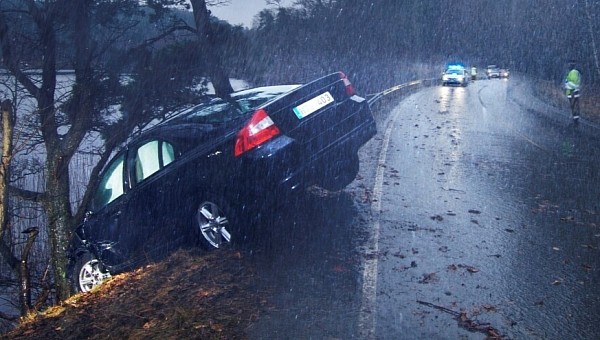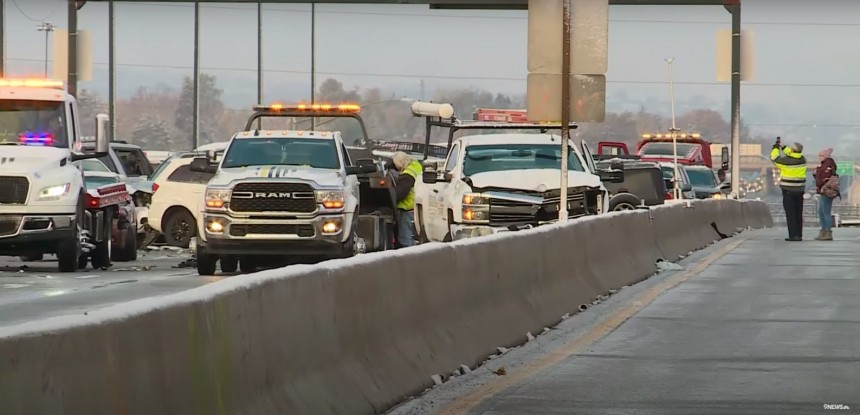It doesn’t matter how good of a driver you are. The elements present a lot of challenges to motorists on the road. It affects the traffic flow and time spent in the car, which may lead to hazards. Depending on where you live in the Northern Hemisphere, temperatures have already started getting low, signaling the wet or winter season.
Over the last couple of months, the United States has been hit by intense hurricanes. The result was severe destruction of property, casualties, and loss of homes and livelihoods. Of course, no one plans on getting hit by mother nature, but when the time comes, you’d better be safe than sorry.
That said, the holiday season is right around the corner. Everyone’s itching for some time off to spend with their loved ones.
Aware that many Americans plan to hit the road in a couple of weeks, the United States National Highway Traffic Safety Administration (NHTSA) shared some safety tips for driving in severe weather.
It’s harder to control your vehicle when it is slippery. Therefore, it is advisable to increase your following distance giving you extra time to stop in case of a snarl-up. Understanding that every car handles differently, especially in wet conditions, is also essential.
Don’t activate your Cruise Control in the rain. You need to be in total control while driving in wet conditions.
According to NHTSA, it only takes 12 inches (30 centimeters) of rushing water to carry a conventional car and about 2 feet (0.6 meters) to carry an SUV or truck.
A report by the CDC says that the most common type of drowning occurs from flood-related incidents. So, as a rule of thumb, when you see a flooded road or barrier, just turn around.
However, it’s critical to be extra alert on the road and look at the bigger picture during such conditions. Turn on your defroster to increase your visibility, and clear out fogging.
Don’t make rash movements on the road, such as braking, swerving, or sudden acceleration. Instead, drive gently.
Take some time to research your route. Check the weather reports for conditions on your way, news outlets for construction or detours, and traffic updates for possible snarl-ups on the road ahead. Moreover, if your journey will take more than a couple of hours, plan for stops or book a hotel in advance.
To protect yourself, put together an emergency roadside kit. Pack enough snacks, drinking water, a flashlight, charged cellphone, and a first aid kit.
Ensure you have a flat tire repair kit, a sufficiently inflated spare wheel, a tool kit, and a can of water for your vehicle.
That said, the holiday season is right around the corner. Everyone’s itching for some time off to spend with their loved ones.
Aware that many Americans plan to hit the road in a couple of weeks, the United States National Highway Traffic Safety Administration (NHTSA) shared some safety tips for driving in severe weather.
Drive Slow
Cars can build up speed for a reason – to get you where you need to be fast! But when it rains, flooring your gas pedal can only increase the possibility of getting into problems.It’s harder to control your vehicle when it is slippery. Therefore, it is advisable to increase your following distance giving you extra time to stop in case of a snarl-up. Understanding that every car handles differently, especially in wet conditions, is also essential.
Don’t activate your Cruise Control in the rain. You need to be in total control while driving in wet conditions.
Don’t be a Hero. Turn Around
It doesn't matter how powerful your vehicle is or what kind of off-road beast you are driving. Mother nature has a way of humbling human technology. It's easy to underestimate the intensity of gushing water, and unfortunately, some people have lost more than their vehicles or belongings by taking chances.According to NHTSA, it only takes 12 inches (30 centimeters) of rushing water to carry a conventional car and about 2 feet (0.6 meters) to carry an SUV or truck.
A report by the CDC says that the most common type of drowning occurs from flood-related incidents. So, as a rule of thumb, when you see a flooded road or barrier, just turn around.
Watch out For Pedestrians and Cyclists
Visibility is a significant problem when driving in adverse conditions that lead to flooding. Navigating through puddles, watching out for brake lights, and straining under heavy rain can leave you exhausted.However, it’s critical to be extra alert on the road and look at the bigger picture during such conditions. Turn on your defroster to increase your visibility, and clear out fogging.
Don’t make rash movements on the road, such as braking, swerving, or sudden acceleration. Instead, drive gently.
Plan Your Travels Ahead of Time
It doesn’t matter how many years you’ve used a road. Things get different when there’s extreme weather. For a seamless travel experience, plan your travel route ahead.Take some time to research your route. Check the weather reports for conditions on your way, news outlets for construction or detours, and traffic updates for possible snarl-ups on the road ahead. Moreover, if your journey will take more than a couple of hours, plan for stops or book a hotel in advance.
Run a Tight Ship
Unfortunately, many people are putting their hopes on emergency services. During holiday seasons or extreme weather, emergency incidents double. If you need help, you'll have to wait longer before getting assistance – worse if you're stuck in the middle of nowhere.To protect yourself, put together an emergency roadside kit. Pack enough snacks, drinking water, a flashlight, charged cellphone, and a first aid kit.
Ensure you have a flat tire repair kit, a sufficiently inflated spare wheel, a tool kit, and a can of water for your vehicle.
Turn around, don't drown if you see a flooded road. ????
— nhtsagov (@NHTSAgov) November 10, 2022
If you must travel in severe weather, follow these helpful tips: https://t.co/K2mGDqKBgT #Nicole pic.twitter.com/6QTlWCNpC5















